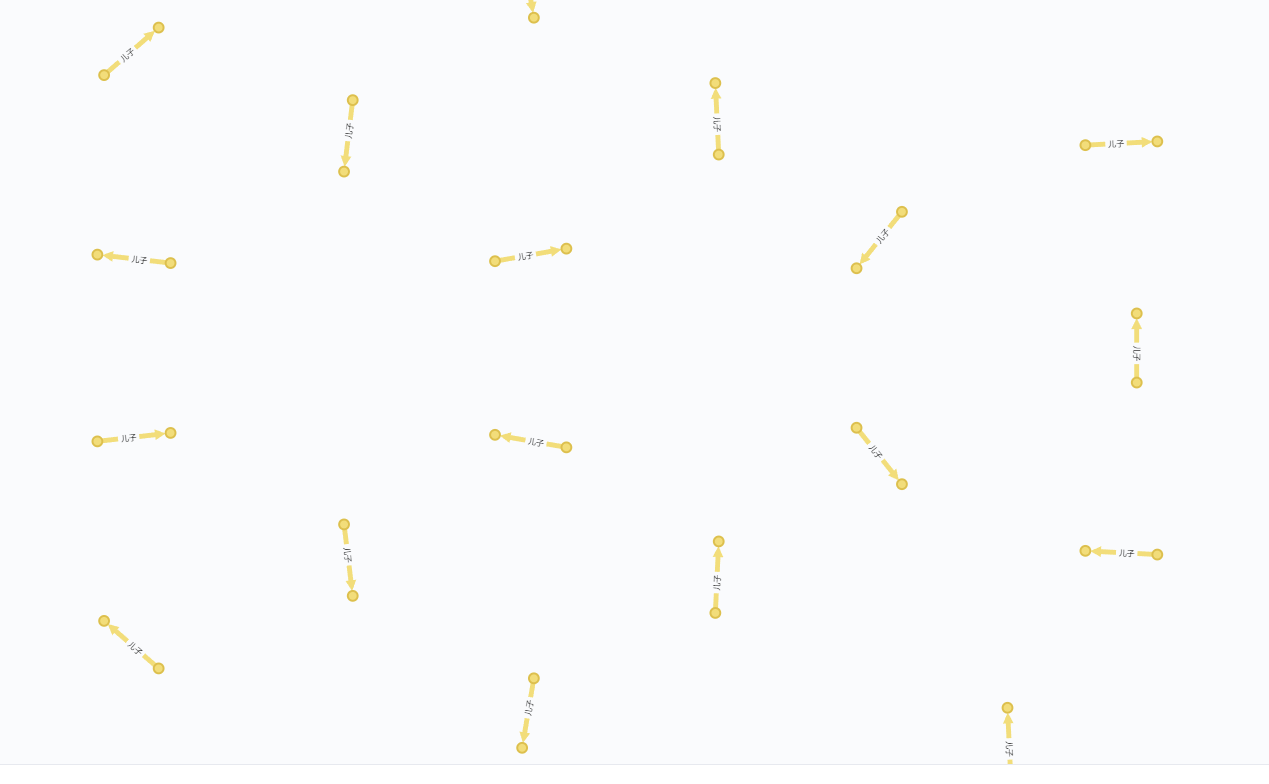基于neo4j的数据可视化
Neo4j是一个高性能的,NOSQL图形数据库,它将结构化数据存储在网络上而不是表中。它是一个嵌入式的、基于磁盘的、具备完全的事务特性的Java持久化引擎,但是它将结构化数据存储在网络(从数学角度叫做图)上而不是表中。Neo4j也可以被看作是一个高性能的图引擎,该引擎具有成熟数据库的所有特性。程序员工作在一个面向对象的、灵活的网络结构下而不是严格、静态的表中——但是他们可以享受到具备完全的事务特性、企业级的数据库的所有好处。
(1)安装好neo4j数据库后,进入bin目录,控制台输入,启动neo4j数据库,浏览器输入,访问数据库。
(2)使用python导入数据。
相关代码如下:
1.连接数据库
# coding:utf-8 from py2neo import Graph, Node, Relationship, NodeMatcher import numpy as np import pandas as pd person_list = pd.read_csv('testdata1.txt', sep=' ') X = person_list[["id", "child_id", "relation"]] # 取出需要的数据 list = [] nodes = [] categories = [] ##连接neo4j数据库,输入地址、用户名、密码 graph = Graph('http://localhost:7474', auth=("neo4j", "root"))
2.数据去重,并且创建结点
##创建结点 i = 0 uniqueId = [] uniqueChildId = [] for row in X.iteritems(): if i == 0: uniqueChildId = np.unique(row[1].values) nodes.append(uniqueChildId) print(uniqueChildId) i =i+1 continue if i == 1: uniqueId = np.unique(row[1].values) nodes.append(uniqueId) print(uniqueId) i=i+1 continue uniqueId = np.append(uniqueId,uniqueChildId) globalUnique = np.unique(uniqueId) print(globalUnique) #id以及子id去重后的全局唯一id j = 0 for row in globalUnique: graph.create(Node('血缘关系', name=int(row))) j+=1 print('node:'+str(j))
3.创建关系
# ##创建关系 k = 0 for row in X.itertuples(): list.append({"source":str(row.id),"target":str(row.child_id)}) relation = "" if(row.relation=='s'): relation = "儿子" elif(row.relation=='m'): relation = "母亲" elif(row.relation=='f'): relation = "父亲" rel = Relationship(NodeMatcher(graph).match(name=row.id).first(), relation, NodeMatcher(graph).match(name=row.child_id).first()) print(rel) k+=1 print('res:'+str(k)) graph.create(rel)
整个过程大概持续2个小时左右(10万条数据)。
(3)通过查看可视化数据如下:

通过上图可以看到,数据的逻辑关系已经展示出来,但是有一个问题,就是数据的逻辑关系混乱(同一个人,既是儿子,又是母亲)
大数据环境下,数据无法做到百分百正确,需要根据一些特定参数进行修正,但是规则也不是随意指定的,此处我们没有更多的信息,暂不修正逻辑错误。
(4)通过查询结点
查询指定属性结点:
MATCH (n)-->(b) where b.name = 1296
return b
查询指定关系结点:
MATCH p=()-[r:`儿子`]->() RETURN p
查询指定label结点:
MATCH (n:`血缘关系`) RETURN n
按指定度查询结点:
MATCH (k)
WITH k, size((k)--()) as degree
WHERE degree = 1
MATCH (k)--(n)
RETURN n,k,degree
查找结点最短路径:
MATCH (p1:`血缘关系` {name:9311}),(p2:`血缘关系`{name:365}),
p=shortestpath((p1)-[*..10]->(p2))
RETURN p
注:[*…10]表示查询路径长度10以内的关系